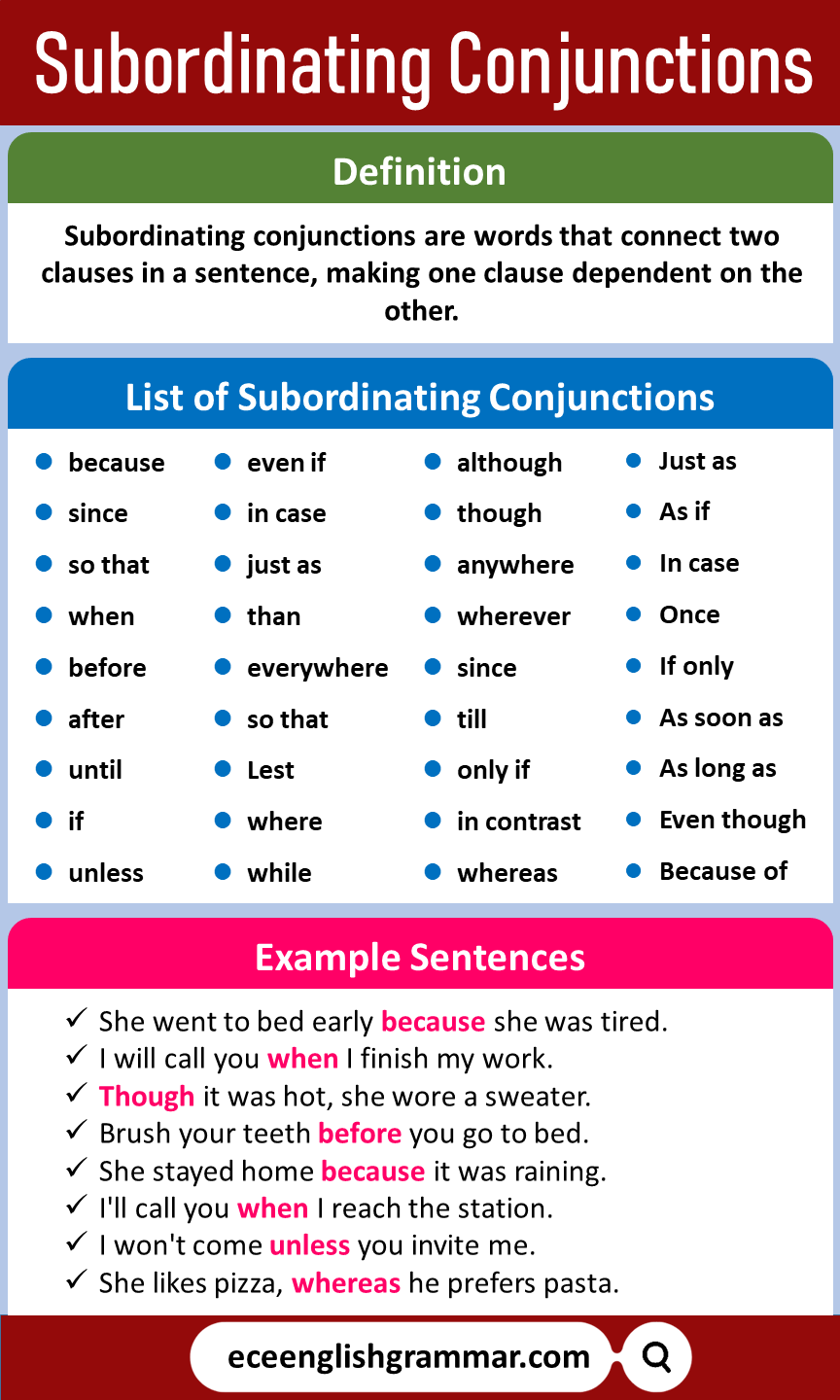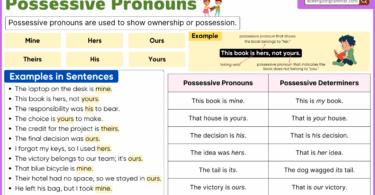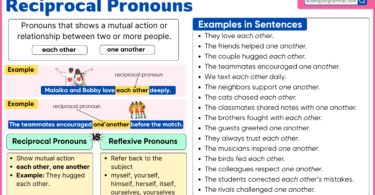Subordinating conjunctions are essential components of the English language that help to connect dependent clauses to independent clauses. These conjunctions, also known as subordinators, play a crucial role in clarifying the relationship between the two clauses. In this article, we’ll explore some common subordinating conjunctions and how to use them effectively with rules and examples. So let’s get started!
Table of Contents
What Are Subordinating Conjunctions?
Subordinating conjunctions are words that connect two clauses in a sentence and show a relationship of dependence between them. They introduce a subordinate (dependent) clause and indicate how it relates to the main (independent) clause. They help express time, cause and effect, contrast, condition, and other relationships within a sentence.
There are two types of clauses in a sentence: independent clauses, which can stand alone as complete sentences, and dependent clauses, which cannot stand alone and need an independent clause to make a complete thought. By using subordinating conjunctions, you can create more complex and meaningful sentences in the English language.
Here’s a simple example: “I will go to the park (main clause) when it stops raining (subordinate clause).” In this sentence, “when” is the subordinating conjunction, connecting the two clauses and showing the time relationship between them. Some common examples of subordinating conjunctions include “because,” “although,” “if,” “when,” and “since” etc.
Examples:
- Stay here until I come back.
- Call me when you reach home.
- If you study, you’ll pass the exam.
- Unless it’s urgent, don’t disturb me.
- Before you leave, close the door.
Common Subordinating Conjunctions
- After:
- Purpose: Indicates a sequence in time.
- Example: After she finished her dinner, she went for a walk.
- Although:
- Purpose: Introduces a contrast or concession.
- Example: Although it was raining, they decided to go to the beach.
- As:
- Purpose: Functions similarly to “because” to show cause.
- Example: She stayed indoors as it was too hot outside.
- Because:
- Purpose: Indicates the reason for an action.
- Example: She ate a sandwich because she was hungry.
- Before:
- Purpose: Indicates the time that precedes an event.
- Example: Finish your homework before you go out to play.
- If:
- Purpose: Introduces a condition or possibility.
- Example: If it rains, we’ll stay indoors.
- Since:
- Purpose: Indicates the cause or reason for an action.
- Example: Since he loves animals, he volunteers at the shelter.
- Though:
- Purpose: Introduces a contrast or concession.
- Example: Though it was late, they continued the party.
- Unless:
- Purpose: Introduces a condition that must be met for something else to happen.
- Example: You won’t get dessert unless you finish your vegetables.
- Until:
- Purpose: Indicates the time up to which an action continues.
- Example: Stay here until I come back.
- When:
- Purpose: Indicates a specific time or condition.
- Example: Call me when you reach the station.
- Whenever:
- Purpose: Indicates any time or every time a condition is met.
- Example: You can visit whenever you want.
- Where:
- Purpose: Indicates a place or location.
- Example: I’ll meet you where the river bends.
- While:
- Purpose: Introduces an action that happens simultaneously with another.
- Example: She studied while waiting for the bus.
- Because of:
- Purpose: Indicates the cause or reason for a situation.
- Example: He was late because of heavy traffic.
- Even though:
- Purpose: Introduces a contrast or concession.
- Example: Even though it was hot, they wore jackets.
- In order to:
- Purpose: Indicates the purpose or goal of an action.
- Example: She worked hard in order to pass the exam.
- As if/As though:
- Purpose: Introduces a hypothetical or imaginary situation.
- Example: He looked at me as if he had seen a ghost.

Subordinating Conjunctions
Functions of Subordinating Conjunctions
Here are some basic functions of subordinating conjunctions:
Cause and Effect
Subordinating conjunctions play a crucial role in expressing cause-and-effect relationships between two clauses. When we want to explain why something happened, we use conjunctions like “because” or “since.” They help answer “why” or “how” one action leads to another. For example, “She went to bed early because she was tired.” Here, the second clause (she was tired) explains the reason for the action in the first clause (she went to bed early).
Showing Time:
Subordinating conjunctions help establish a temporal connection between two clauses. Words like “when,” “while,” and “after” indicate the timing of events. For instance, “I will call you when I reach home.” In this sentence, the second clause (I reach home) provides the time frame for the action in the first clause (I will call you).
Expressing Condition
Subordinating conjunctions are instrumental in introducing conditional relationships. Words like “if,” “unless,” and “provided that” indicate circumstances under which the action in the main clause occurs. For example, “If it rains, we will stay indoors.” The second clause (it rains) sets the condition for the action in the first clause (we will stay indoors).
Showing Contrast
These conjunctions help highlight differences or contrasts between two clauses. Words like “although,” “while,” and “though” are used to introduce conflicting ideas. For instance, “Although it was raining, they decided to go for a walk.” Here, the second clause (it was raining) presents a contrast to the action in the first clause (they decided to go for a walk).
Depicting Purpose
Subordinating conjunctions also convey purpose or intention. Words like “so that” or “in order that” indicate the reason behind an action. For example, “She studied hard so that she could pass the exam.” In this sentence, the second clause (she could pass the exam) expresses the purpose of the action in the first clause (she studied hard).
Providing Concessions
These conjunctions express a concession, acknowledging a contrasting point while still maintaining the main idea. Words like “although” and “even though” are used in this context. For example, “Although it was raining, they decided to go for a walk.” The second clause concedes to the unfavorable weather but does not negate the main action.
Comparison
Conjunctions like “than” and “as” are used to show a comparison between two elements. For instance, “She is taller than her brother.” The subordinate clause introduced by “than” sets up the comparison between the heights of two individuals.
Describing Location
Subordinating conjunctions can also be used to convey the location or place of an action. Words like “where” and “wherever” are employed in this context. For instance, “I’ll meet you where we first met” specifies the location of the meeting.
Subordinating Conjunction Rules
- Don’t Separate Clauses: Avoid placing a full stop between the main and subordinate clauses.
- Connect Clauses: Subordinating conjunctions link two clauses in a sentence.
- Dependency: One clause relies on the other for complete meaning.
- Order: The main clause often comes before the subordinate (dependent) clause.
- Comma Use: If the subordinate clause comes first, use a comma to separate it.
- No Comma: If the main clause comes first, no comma is needed.
- Position: They often appear at the beginning of the subordinate (dependent) clause.
- Avoid Comma Splices: Don’t connect two independent clauses with a comma alone.
- Use Parallel Structure: Maintain a parallel structure to connect ideas for a smoother flow.
- Choose the Right Conjunction: Select a subordinating conjunction that fits the relationship between the clauses.
List of Subordinating Conjunctions
Understanding the various subordinating conjunctions is essential for constructing clear and meaningful sentences. Here is a list of commonly used subordinating conjunctions:
- after
- although
- as
- as if
- as long as
- as much as
- as soon as
- as though
- as well as
- because
- before
- by the time
- even if
- even though
- if
- since
- in case
- in order that
- insofar as
- just as
- lest
- now
- no matter how
- now that
- or
- once
- only if
- provided that
- rather than
- since
- so that
- supposing
- than
- that
- though
- till
- unless
- until
- when
- whenever
- where
- whereas
- wherever
- whether
- while
- even though
- as soon as
- because of
- as long as
Tips for Using Subordinating Conjunctions
- Identify the Main and Subordinate Clauses: Understanding the distinction between the main and subordinate clauses is crucial for placing the subordinating conjunction correctly.
- Consider the Relationship: Choose the subordinating conjunction that accurately reflects the relationship between the clauses, whether it’s time, cause and effect, contrast, or condition.
- Choose Appropriate Conjunctions: Select subordinating conjunctions that precisely convey the relationship you want to express. Different conjunctions indicate different connections.
- Punctuation Matters: When a subordinate clause precedes the main clause, use a comma to separate them. If the main clause comes first, no comma is needed.
- Practice Varied Usage: Experiment with different subordinating conjunctions to convey the same relationship. This can enhance your command of language and make your writing more dynamic.
Subordinating Conjunctions Examples
- After: After the rain, we saw a beautiful rainbow.
- Because: She smiled because she received a gift.
- If: If it rains, we will stay indoors.
- Since: Since it’s your birthday, we got you a present.
- When: I’ll call you when I reach the station.
- While: She read a book while waiting for her turn.
- Though: Though it’s late, we can still go for a walk.
- Unless: You won’t understand unless I explain it to you.
- Where: This is the place where we first met.
- As soon as: Call me as soon as you arrive.
- Since: Since it’s Saturday, we can sleep in.
- While: We played games while waiting for the food.
- Until: Stay here until I come back.
- Although: Although it’s small, the dog is very strong.
- Before: Finish your meal before you have dessert.
- When: I’ll tell you a story when you finish your chores.
- Though: Though it’s hot, they enjoy playing outside.
- If: If you water the plants, they will grow.
- Because: She smiled because the sun was shining.
- Since: Since it’s dark, turn on the light.
- While: We watched a movie while eating popcorn.
- Whether: I don’t care whether it’s pizza or pasta.
- After: She rested after she completed the race.
- Because: They left early because they had a long drive.
- If: If you study hard, you’ll get good grades.
- When: I’ll call you when I’m on my way.
- While: He listened to music while doing his homework.
- Unless: You won’t understand unless you ask questions.
- Where: This is the spot where they found the treasure.
- Whether: Whether it’s sunny or rainy, we’ll have fun.
Subordinating Conjunctions Exercises
1. She didn’t go to the party _______ she wasn’t feeling well.
- but
- because
- or
- so
2. Which subordinating conjunction shows a time relationship?
- if
- while
- unless
- since
3. Which subordinating conjunction is used to express a contrast?
- if
- although
- after
- since
4. He won’t understand the instructions __________ you explain them clearly.
- whereas
- unless
- after
- while
5. __________ she was tired, she stayed up to finish her work.
- if
- while
- because
- since
6. I’ll call you __________ I arrive at the airport.
- when
- unless
- if
- because
7. Finish your chores __________ you can go out to play.
- although
- because
- if
- after
8. He enjoys hiking __________ I prefer staying indoors.
- whereas
- because
- when
- unless
9. They decided to cancel the picnic __________ it started to rain.
- unless
- when
- because
- after
10. I’ll be happy __________ I see you again.
- unless
- after
- when
- because
Answers:
- b) because
- b) while
- b) although
- b) unless
- b) while
- a) when
- c) if
- a) whereas
- b) when
- c) when
FAQs
Q1: What is a subordinating conjunction?
A subordinating conjunction is a word that connects two clauses in a sentence, making one clause dependent on the other. It shows the relationship between the clauses, such as time, cause and effect, contrast, or condition.
Q2: How do subordinating conjunctions differ from coordinating conjunctions?
Subordinating conjunctions connect a dependent (subordinate) clause to an independent (main) clause, indicating a relationship of dependence. Coordinating conjunctions, on the other hand, connect two independent clauses of equal importance.
Q3: What are some common subordinating conjunctions?
Common subordinating conjunctions include “because,” “although,” “if,” “when,” “while,” “before,” “since,” “unless,” “whereas,” and “after.”
Q4: What’s the role of subordinating conjunctions in a sentence?
Subordinating conjunctions join clauses, indicating the relationship between them. They help convey the order, time, cause, contrast, or condition of actions or events within a sentence.
Q5: Give some examples of subordinating conjunctions.
Here are some example sentences of subordinating conjunctions:
- Call me if you need any help.
- Wait here until I come back.
- We’ll go for a walk when the sun sets.
- You won’t pass the test unless you study.
- She prefers tea, whereas he likes coffee.
You May Also Like:




Leave a Comment